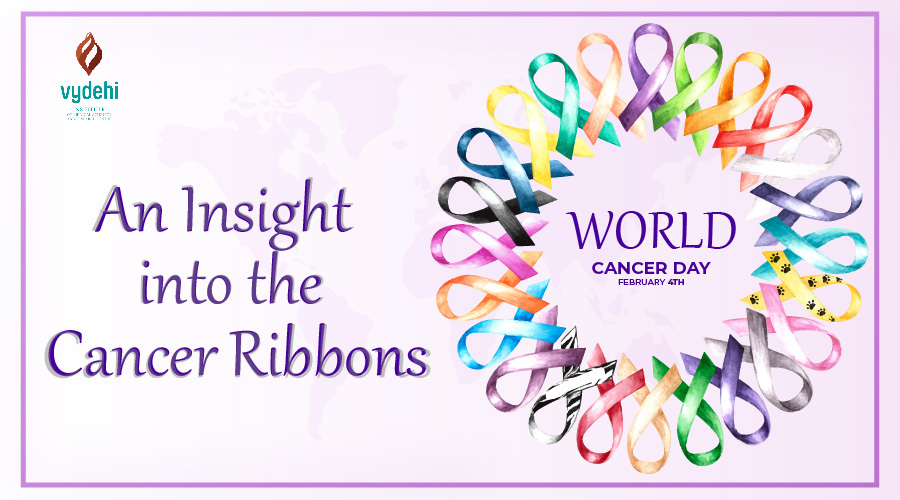

Cancer, The word is enough to spread fear of unknown pain and suffering in commoners. When discovered, the condition was a synonym for death.
Nearly 100 varieties of cancers known to humankind affect various organs, glands, nodes, and tissues in the human body. With the advancement in science, though there has been a treatment for cancers when detected early, people still consider cancer a taboo.
According to WHO, 30 to 50% of cancer are preventable with healthier lifestyle choices. It is alarming that despite all the efforts to raise awareness, people ignore the consequences and get addicted to the carcinogens. The trend hasn’t deterred governments worldwide from organizing campaigns to spread cancer-related awareness to save as many precious lives as possible.
Started by the Union for International Cancer Control (UICC), world cancer day is celebrated every year on February 4th, with the sole aim of raising awareness regarding various cancers.
Activists have taken a step further and assigned colors or created unique symbols to represent them.
Color-coded cancer ribbons are a major factor that has helped to create awareness among people in a significant way. This blog attempts to decode those colored ribbons and reach out to the common public with a message – “cancer has not the end of life. It’s just a phase that is just a little harder to navigate.”
The wife of a hostage held in Iran between 1979 to 1981 started the idea of using a ribbon to show support and raise awareness, drawing inspiration from the US military marching song – “tie a yellow ribbon.”
The earliest mention of the cancer ribbon was in the 1990s by breast cancer survivor Charlotte Haley. She started distributing peach color ribbons to raise awareness that only 5% of the 1.8 billion annual budget of the National Cancer Institute goes to Cancer prevention. The simple gesture of wearing a ribbon turned into a movement.
Later on, in the 2000s, AIDS activists turned the ribbon red. From there on, people wear colored ribbons to show solidarity and support for various charitable and health causes.
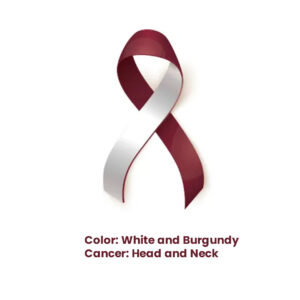
Color: White and Burgundy
Cancer: Head and Neck
Alcohol and tobacco are the two most significant risk factors for head and neck cancer. Hence, there are two colors in the ribbon. Head and neck cancer incorporate cancers of the mouth, pharynx, larynx, nasal cavity, sinuses, and salivary glands.
Color: Orange
Cancer: Leukaemia and kidney
Leukaemia is a blood cancer that usually starts in the bone marrow. Kidney cancer is among the ten most common cancers in the United States.
Statistics reveal that the five-year survival rate for leukemia and the kidney has increased significantly over the decades. The fact may be attributed to the increased awareness and advances in the medical field due to research.
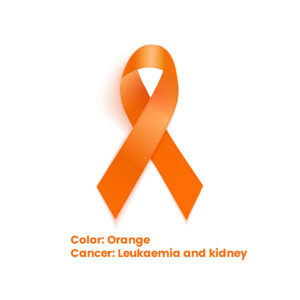
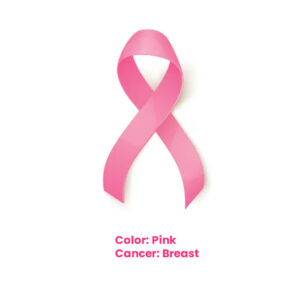
Color: Pink
Cancer: Breast
One of the most well-known ribbons is the pink ribbon represents breast cancer. The first official pink ribbon for breast cancer was by Evelyn Lauder of the Estee Lauder cosmetics company, who was herself a survivor of breast cancer.
Color: Peach
Cancer: Uterine or Endometrial
Most commonly seen in women after the menopausal stage, people wear the peach color ribbon, especially during September, which is the gynecological cancer awareness month, to raise awareness for preventive testing.
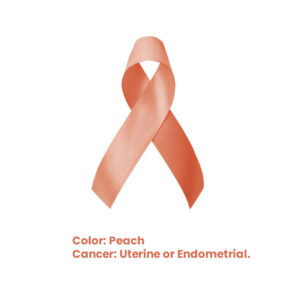
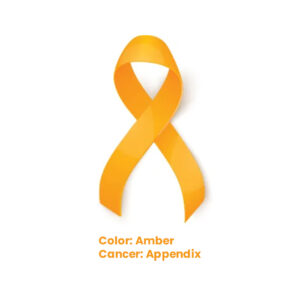
Color: Amber
Cancer: Appendix
As a rare form of cancer, appendix cancer needs more awareness than others. Hence the association with one of the rare colors.
Color: Purple
Cancer: Pancreatic
Pancreatic cancer is difficult to diagnose cancer in its earlier stages. The purple color ribbon for pancreatic cancer was assigned by the daughter of a pancreatic cancer patient, Rose Schinder, who passed away battling the same. Pancreatic Cancer Action Network was founded in her memory to help people with pancreatic cancer and raise awareness.
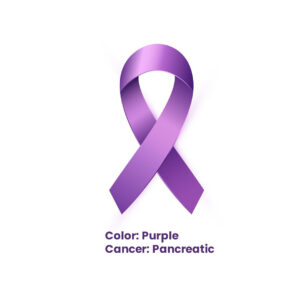
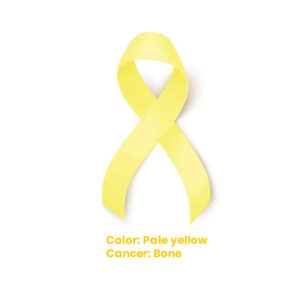
Color: Pale yellow
Cancer: Bone
The pale yellow ribbon represents bone cancer or sarcoma. It can also affect the connective tissues in the body, such as cartilage or myofascial tissue.
Color: Teal and White
Cancer: Cervical Cancer
Cervical cancer is one of the deadliest and silent cancers. Early detection is the key to survival. Regular tests such as pap smears have contributed significantly to reducing the number of deaths.
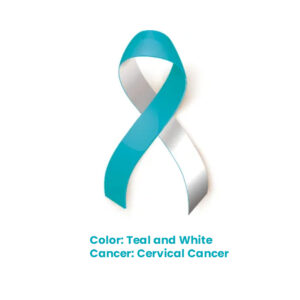
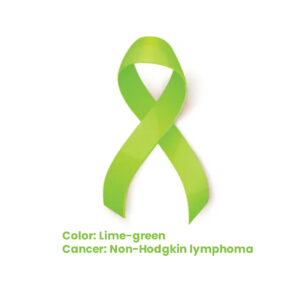
Color: Lime-green
Cancer: Non-Hodgkin lymphoma
Cancer affecting the lymphatic system is non-Hodgkin lymphoma. It’s often grouped with leukemia since both affect the blood.
Color: White
Cancer: Lung
Lung cancer is responsible for about 25% of all cancer-related deaths. Hence, the need to raise awareness about the carcinogens like tobacco is now more than ever.
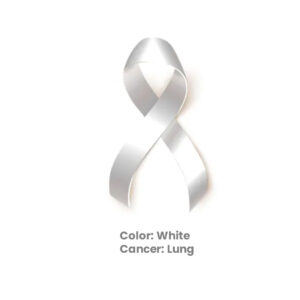
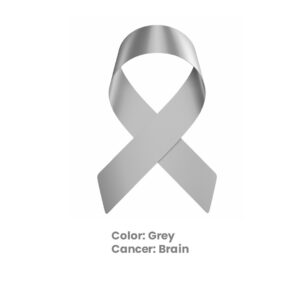
Color: Grey
Cancer: Brain
A plausible representation of the grey matter present in the brain, the grey color ribbon aims to create awareness and raise funds for brain cancer.
Color: Zebra print
Cancer: Carcinoid
Carcinoid cancer is another rare cancer that commonly appears and the small intestine in the bronchial systems in the lungs. Often, people experience no symptoms until cancer develops to be a life threat.
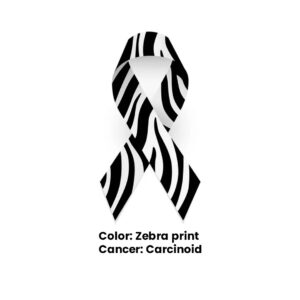
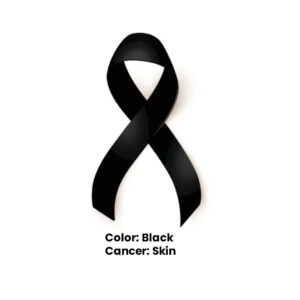
Color: Black
Cancer: Skin
According to research, skin cancer is one of the most commonly affecting cancer types. People wear a black ribbon to promote regular skin checks and preventive screenings.
Color: Periwinkle Blue
Cancer: Stomach
Stomach cancer is receiving little attention even though it is the second leading cause of cancer deaths globally. Hence, it is vital to promote this ribbon for raising public knowledge and funds to aid the research.
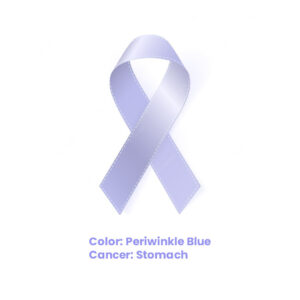
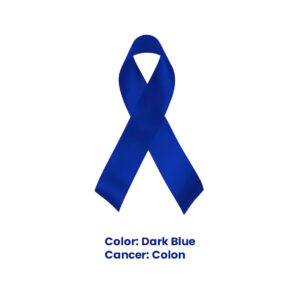
Color: Dark Blue
Cancer: Colon
Colon cancer affects the large intestine. Studies have shown that regular screening for polyps and signs of colon cancer has improved five-year survival rates. Wearing this dark blue ribbon helps to stand for the cause and increases the survival rate for colorectal cancer.
Color: Lavender
Cancer: All Types
The lavender ribbon for cancer is a sign of support for all types of cancer, cancer patients, cancer survivors, and their family. Wearing a rainbow-colored ribbon also indicates the same.
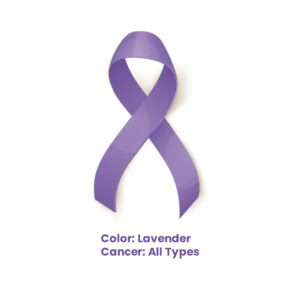
There are many more colors that help you identify and show your support for cancer victims and families, apart from those mentioned above. We welcome you to add them in the comment sections below to show your support.
Widely known cancers are also assigned a month, throughout which talks and seminars are held to create awareness. Yet, the efforts seem small. So, this cancer awareness day, do your bit by wearing your ribbons and showing that you are cancer aware. Spread the message – Life is beautiful beyond cancer. So, stay on the team, and fight cancer to achieve your dream.


Disclaimer: The information included here is only for knowledge-sharing purposes, and the blog is not intended to be a substitute for diagnosis, medical advice, or treatment by a healthcare professional. Every individual needs advice based on diagnosis and evidence, hence the reader should consult their doctor to determine the disease and any treatment must be taken under appropriate medical guidance.

 Emergency Number
Emergency Number
Excellent article about the world cancer day ribbon color!!
What is the purple cancer ribbon meaning?